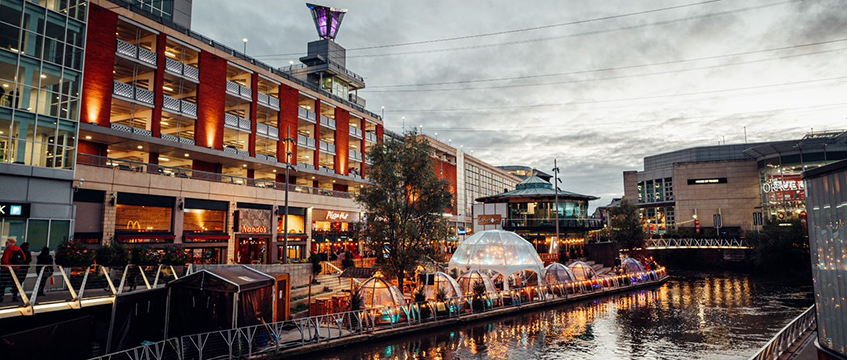Hammerson is seeing “tangible results” from its £623m disposals programme, but boss Rita-Rose Gagné acknowledges: “We have more to do.”
Announcing the retail-focused REIT’s annual results this morning, which confirmed a £429m loss, Gagné said the refocusing of the business had resulted in “strong occupier leasing demand, reduced vacancies, improved collections, a lower cost base and clear path to value creation from our landbank”.
Hammerson said the £429m loss was due to revaluations carving £470m off the portfolio. However, it is a marked improvement on 2020s loss of £1.73bn, which was largely the result of a £1.6bn revaluation loss.
Hammerson’s adjusted earnings for 2021 hit £81m, up 122% on 2020’s £37m. Adjusted earnings per share were up 38% to 1.8p. Gross rental income was £242m, down £45m, largely due to in-year disposals, which will have a full-year effect in 2022.
Gagné said: “The increase in adjusted earnings was principally a result of stronger rent collections, higher than usual surrender premiums, a strong contribution from value retail and reduced finance costs.”
Like-for-like rental income increased by 21.7%, bringing passing rent to £214.8m over the year. The REIT also benefitted from a £17m year-on-year increase in surrender premiums and a £12m net rental income contribution from in-year disposals.
Hammerson earned £241.6m from rent over the year, down from 2020’s £287m due to disposals. It was also hit by a further £470m revaluation loss across its portfolio, although this too was an improvement on the £1.6bn loss suffered the previous year.
Gagné said: “Since the beginning of 2021, we have made fundamental changes in our business, realigning our portfolio with £623m of disposals, significantly strengthening the balance sheet, resetting our organisation and putting in place a clear strategy for value creation focused on our prime urban estates.”
Following 2021’s £503m of disposals, the group portfolio value stood at £5.37bn. Capital returns have improved from around -21% to -8%, while losses from property returns narrowed from more than 18% to just under 4%.
Gagné said that while the first half of the year was about “stabilising and de-risking the balance sheet, reducing debt through non-core asset sales and refinancing”, the second half saw Hammerson “foster a high-performance culture with a focus on value creation”.
She added that the company now had a “clear focus” on its core portfolio of prime urban estates.
Hammerson said that, in the short term, it was focused on where it was able to unlock value and enable development, “especially where this can complement our existing assets”.
Hammerson has just over 100 acres of land and is progressing detailed feasibility studies for mixed-use developments, largely adjacent to its existing retail destinations.
Four near-term projects – Martineau Galleries and Grand Central in Birmingham, the Goodsyard in London and Dublin Central – have detailed planning in place or, in the case of Grand Central, nearly in place. “Progressing these projects in the near term to a point where they are genuinely ‘ready to go’ development opportunities will create significant value and optionality about how we take them forward and/or look for liquidity opportunities,” Gagné said.
The second wave will include projects such as Dundrum Village in Dublin, Eastgate in Leeds, Bristol Broadmead and Croydon, which are largely at earlier feasibility and planning stages. Gagné added that Hammerson’s strategic Swords land in Dublin was “more long-term in nature”.
“These projects offer the potential for us to become one of the leading city regeneration developers, creating lasting concepts and retaining long-term custodianship using our placemaking and operational expertise,” Gagné said.
“We have more to do. Today we are a forward-looking organisation with our assets at the heart of driving value creation.”
Hammerson has proposed a final dividend of 0.2p per ordinary share.
To send feedback, e-mail piers.wehner@eg.co.uk or tweet @PiersWehner or @EGPropertyNews











